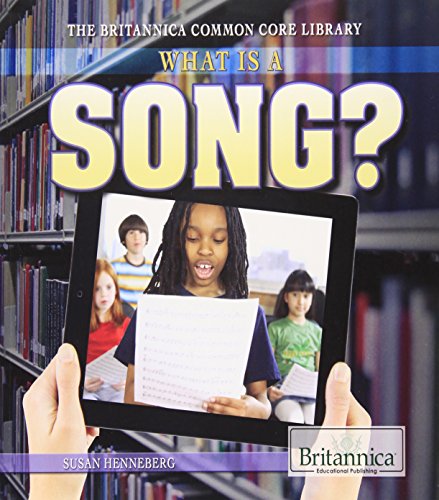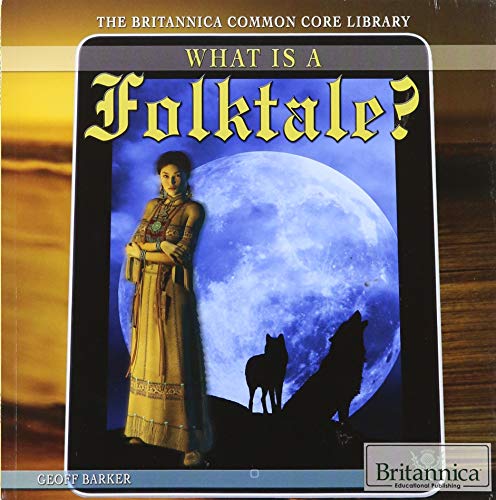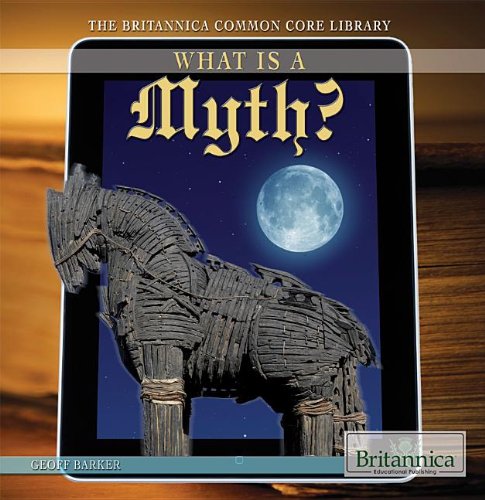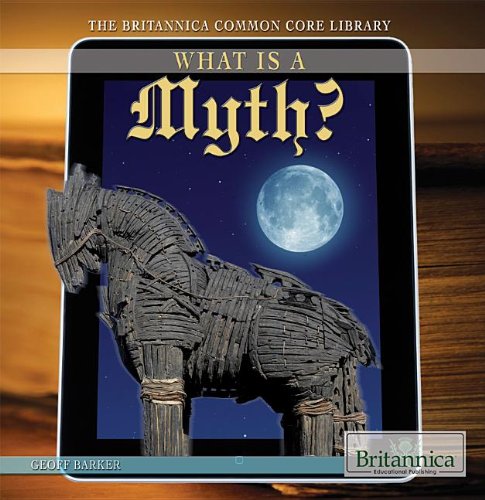-
What Is a Song?
Susan Henneberg
Paperback (Rosen Education Service, Jan. 1, 2015)Songs are universal, and every culture has its own. Some are celebratory. Others tell stories. Many are about love. There are national anthems and protest songs. There are lullabies and playground songs. This book teaches young readers about the many different kinds of songs around the world and throughout history. It then compares pairs of songs, allowing readers to think about how each pair is similar or different. Finally, readers are challenged to write their own song using a step-by-step process outlined in the book. Vocabulary boxes and facts about different songwriters round out this fun examination of song. P
P
-
What Is A Folktale?
Geoff Barker
Paperback (Britannica Educational Pub, Jan. 1, 2014)This enchanting book delves into the history of folktales, or stories made up by peoples around the world to teach important values to their children. Traditional folktales from a variety of Native American communities and distant countries such as India and Botswana are all presented to show the commonalities shared by such diverse cultures in their classic stories. Artwork and paintings illustrate the tales, while textboxes explain important terms that are also defined in the glossary. As a part of the Common Core standards, understanding folktales is an essential skill for studentsone they can develop with the help of the narrative and examples herein. P
P
-
What Is A Myth?
Geoff Barker
Paperback (Britannica Educational Pub, Jan. 1, 2014)Examines what myths are, why they are told, and common themes, and provides cross-cultural comparisons of popular myths from around the world. P
P
-
What Is A Legend?
Robyn Hardyman
Paperback (Britannica Educational Pub, Jan. 1, 2014)Looks at legends, examining what they are and why people tell them, and re-tells several pairs of the tales from around the world with similar themes in order to compare and contrast them. P
P
-
What Is a Fairy Tale?
Robyn Hardyman
Paperback (Britannica Educational Pub, Jan. 1, 2014)Looks at fairy tales, examining what they are and why people tell them, and re-tells several pairs of the tales from around the world with similar themes in order to compare and contrast them. P
P
-
What Is a Play?
Jennifer Culp
Paperback (Rosen Education Service, Jan. 1, 2015)While plays are printed works and are therefore certainly able to be read, they dont truly come alive until they are performed, with actors breathing life into the words on the page. After reading this engaging and informative book, young readers may well want to write and perform their own creative works. Happily, how to do just that is spelled out in the book itself. Also included are excerpts from famous and not-so-famous playsall to educate, entertain, and inspire young readers, including those students who may well be budding playwrights. J
J
-
What Is A Fable?
Robyn Hardyman
Paperback (Britannica Educational Pub, Jan. 1, 2014)Looks at fables, examining what they are and why people tell them, and re-tells several pairs of the tales from around the world with similar themes in order to compare and contrast them. M
M
-
What Is a Song?
Susan Henneberg
Hardcover (Rosen Education Service, Jan. 1, 2015)Songs are universal, and every culture has its own. Some are celebratory. Others tell stories. Many are about love. There are national anthems and protest songs. There are lullabies and playground songs. This book teaches young readers about the many different kinds of songs around the world and throughout history. It then compares pairs of songs, allowing readers to think about how each pair is similar or different. Finally, readers are challenged to write their own song using a step-by-step process outlined in the book. Vocabulary boxes and facts about different songwriters round out this fun examination of song. P
P
-
What Is Fiction?
Greg Roza
Paperback (Rosen Education Service, Jan. 1, 2015)Stories have been a part of our lives since birth. Many parents were reading and recounting stories and tales to us before we could talk. This instructive volume explains what constitutes a work of fiction as well as why it's written in the first place, and highlights important terminology, such as conflict. Key examples feature famous fiction authors and their work, comparing and contrasting their styles, and highlighting some of the prominent features in fiction that literature has to offer. Aspiring writers can start penning their own stories with simple, easy-to-follow, step-by-step writing tips. C
C
-
What Is Fiction?
Greg Roza
Hardcover (Rosen Education Service, Jan. 1, 2015)Stories have been a part of our lives since birth. Many parents were reading and recounting stories and tales to us before we could talk. This instructive volume explains what constitutes a work of fiction as well as why it's written in the first place, and highlights important terminology, such as conflict. Key examples feature famous fiction authors and their work, comparing and contrasting their styles, and highlighting some of the prominent features in fiction that literature has to offer. Aspiring writers can start penning their own stories with simple, easy-to-follow, step-by-step writing tips. C
C
-
What Is a Myth?
Geoff Barker
Library Binding (Britannica Educational Pub, Jan. 1, 2014)Every culture in human history has created its own myths to describe how the natural world works. These stories that explain the cultural lessons, values, and religious beliefs of a specific group of people are a prime component of the Common Core Reading standards for grade levels 2 and 3, and within this book some of the best-known myths are reproduced in a way that readers can grasp and interpret their meanings. Norse, Egyptian, and Chinese myths are among those includedeach told in a way that prompts cross-cultural comparisons and awakens an interest in exploring more myths. Q
Q
-
What Is Nonfiction?
Jeanne Nagle
Hardcover (Rosen Education Service, )In a nutshell, fiction is made up and nonfiction is real: real events, actual people, true facts, and verifiable ideas. This clear and easy-to-follow book cracks open the nutshell and goes well beyond, providing young readers with clear and engaging examples of nonfiction in action. With excerpts from and comparisons between essays, reports, and more, students will come away with a solid comprehension of what constitutes works of nonfiction. Further, readers are given step-by-step guidelines for how to create their own nonfiction pieces. J
J